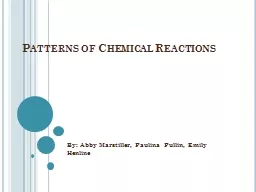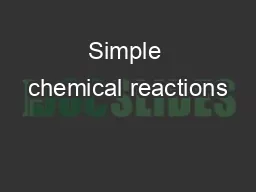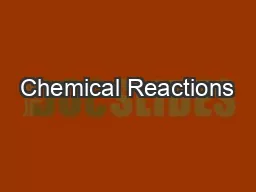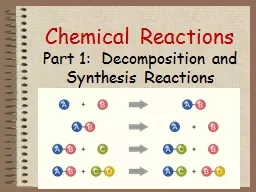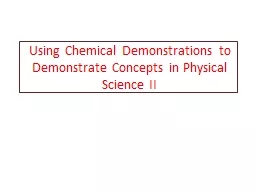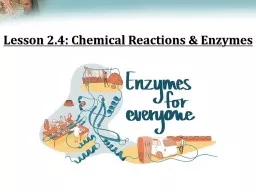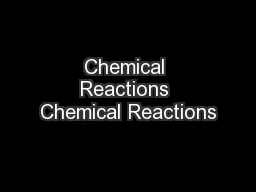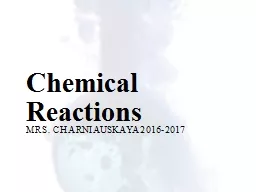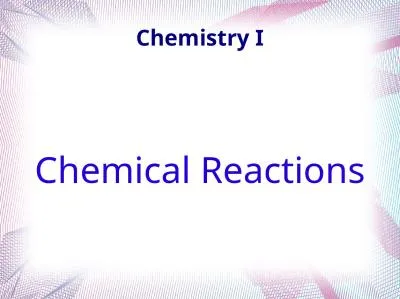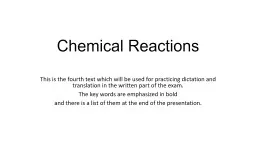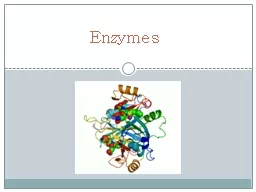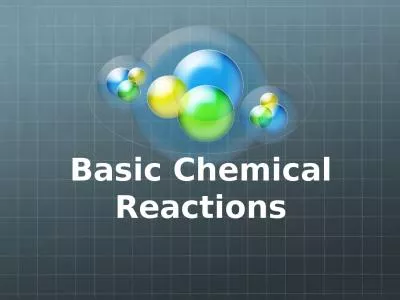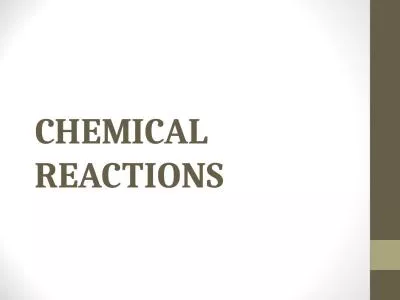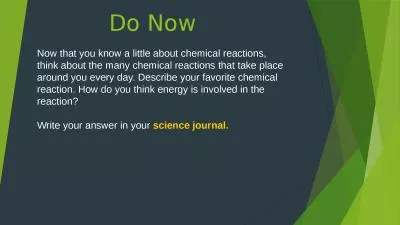PPT-Patterns of Chemical Reactions
Author : conchita-marotz | Published Date : 2018-10-29
By Abby Marstiller Paulina Pullin Emily Henline What is a chemical reaction A chemical reaction involves the making or breaking of bonds between atoms The
Presentation Embed Code
Download Presentation
Download Presentation The PPT/PDF document "Patterns of Chemical Reactions" is the property of its rightful owner. Permission is granted to download and print the materials on this website for personal, non-commercial use only, and to display it on your personal computer provided you do not modify the materials and that you retain all copyright notices contained in the materials. By downloading content from our website, you accept the terms of this agreement.
Patterns of Chemical Reactions: Transcript
By Abby Marstiller Paulina Pullin Emily Henline What is a chemical reaction A chemical reaction involves the making or breaking of bonds between atoms The total number of atoms remains the same but the combinations are different . DEFINITIONS AND TYPES. Revision:. DO NOT WRITE- FOR YOUR INFO ONLY. We have looked at the period table, what atoms are, elements and compounds. You have learnt that atoms can join to make compounds or molecules and that we can mix compounds to make new compounds…..these are chemical reactions. Chemical change. . Reactions with acid. . Reactions with oxygen . 7F. 7F Simple chemical reactions. Chemical change. . 7F Simple chemical reactions. 7F Chemical change – Changing materials. How many different materials can you see in this bedroom?. Theme: . Changes and Reactions . LecturePLUS Timberlake. 2. color. melting point. boiling point. electrical conductivity. specific heat. density . state (solid, liquid, or gas). . Part . 1: Decomposition and Synthesis Reactions. . Objectives. -To identify decomposition and synthesis chemical reactions. -To predict the products of these two types of reactions. 2. Symbols in . Holt Science & Technology:. Physical Science. Chapter 14 Chemical Reactions. Section 4 Energy and Rates of Reactions. Section Outline. Reactions and Energy. - Exothermic reactions. . . Figure 1. Types of Chemical Reactions. Chemical Reactions. :. A . chemical reaction . is a process that changes one set of chemicals into another by rearranging chemical bonds. The elements you start with are . reactants. The elements you end with are . 10.1 . Reactions and . Equations. Evidence of Chemical Reactions. .. . The process of which the atoms of one or more substances are rearranged to form different substances is called a . Chemical Reaction. Charniauskaya. 2016-2017. Plan for the Unit. Writing . chemical . equations. Reactants vs. products, writing equations from word problems, . diatomics. , states of reactants/products (s, l, g, . aq. What is a chemical reaction?. A . chemical reaction. is a process that converts one or more substances into another substance.. Chemical Reactions. The starting substances are the . reactants. .. The resulting substances are the . The key words are emphasized in bold . and there is a list of them at the end of the presentation. . Chemical Reactions. When a chemical reaction occurs, new substances (called . products. ) form from the substances taking part in the reaction (called . In order for chemical reactions to take place, . enzymes . must be present to help . speed up . the reaction.. Chemical bonds connect atoms. to make . molecules. .. Chemical . reactions. can do two things:. What is a Chemical Reaction?. A Chemical reaction occurs when ever a chemical bond is formed, broken or rearranged.. A chemical reaction will always create a new substance.. Energy and Chemical Reactions. All. chemical reactions either release or absorb energy. . The energy can take many forms: . HEAT. , . LIGHT. , . SOUND. , and . ELECTRICITY. . Chemical . bonds. are the source of this energy. . Write your answer in your. . science journal.. Quiz. 1. How . many molecules of oxygen gas in the reactant (O. 2. ) are needed to balance this equation?. CH. 4. + O. 2. → 2CO. 2. + 4H. 2. O.
Download Document
Here is the link to download the presentation.
"Patterns of Chemical Reactions"The content belongs to its owner. You may download and print it for personal use, without modification, and keep all copyright notices. By downloading, you agree to these terms.
Related Documents

